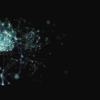Decision tree
Instructors will have to make the decision as to whether, and to what extent students will be permitted to use generative AI tools to support their learning. To help you make the decision in your classes, review our “Should I Allow My Students to Use Generative AI Tools?” decision tree.
Make it your friend
One approach to addressing generative AI in your classes is to encourage students to use the tools to meet course learning goals, for example, by having students experiment with prompt writing or using text generation tools as part of their writing process.
Learn more about productively using generative AI tools to support student learning in your classes.
Critical examination
AI stands to have a significant impact on how we live and work in coming years. One approach to addressing the existence of generative AI in our classes is to design assignments and activities that take AI as an object of critical inquiry.
Learn more about adopting AI as an object of inquiry.
Creatively Work Around AI
If your goal is to disallow or discourage students from using generative AI tools, it will be necessary to design assessments and class activities that are either difficult to complete with the use of AI tools or that are completed in a context in which it is difficult to make use of these tools.
Learn more about strategies for creatively working around AI.
And don't miss our series on using PI (Pedagogical Intelligence) to manage AI.
Talking to your students about AI
Whatever approach we decide to take in our classes with respect to the use and study of generative AI tools, it will be critical to talk to our students about AI and learning. It is important that we’re transparent with students about the choices we’ve made and that we speak with rather than at our students about the impact of AI on their learning and lives.
Learn more about talking with your students about AI.
Syllabus guidance
Once you have decided what authorized and appropriate use of AI tools in your classroom will look like, be sure to clearly indicate your expectations in your syllabus. The CAT has drafted syllabus language to get you started.
Detection tools
Faculty may disallow the use of generative AI tools, or allow their use but in a limited way. How, then, are we to identify when students are using AI inappropriately? Many companies claim to have created tools that can consistently and accurately identify text or images generated or modified by AI tools, but there is, as of yet, no tool that can fully accurately differentiate AI generated from human generated content. If we choose to use an AI detection tool, we must do so with extreme caution. Temple currently recommends the use of no tool other than Turnitin’s AI detector. However, even Turnitin's tool raises concerns. Fore on this issue, see Evaluating the Effectiveness of Turnitin’s AI Writing Indicator Model.
Learn more about AI detection tools.

